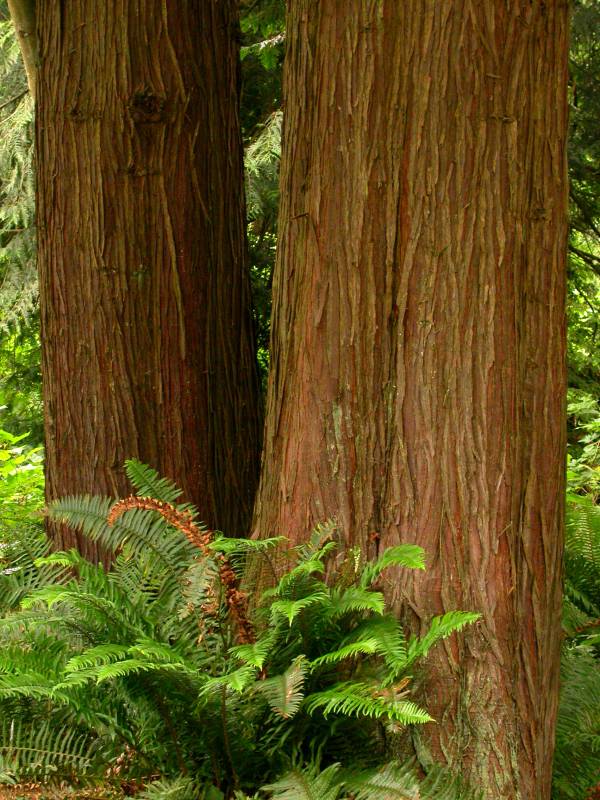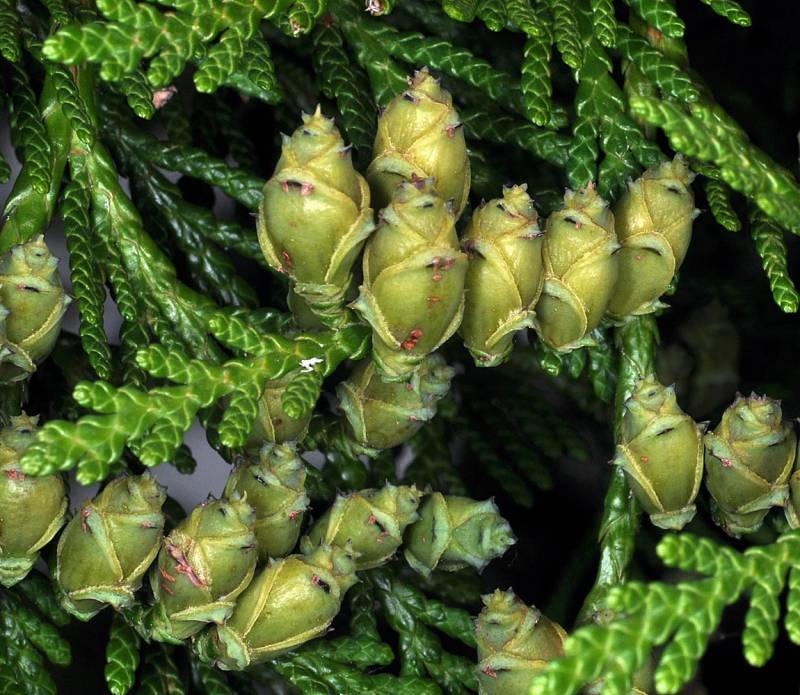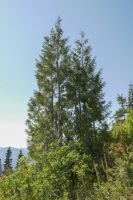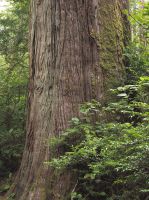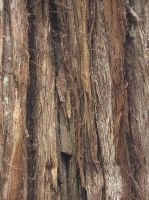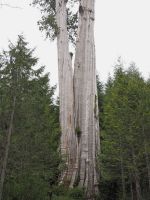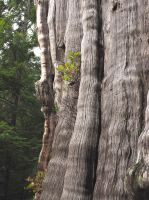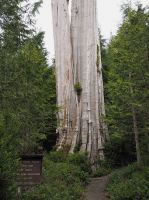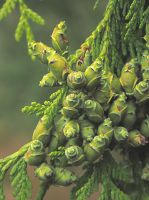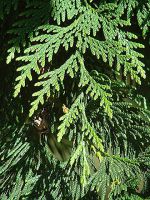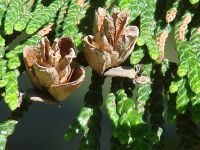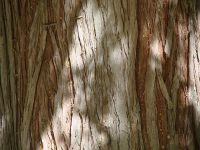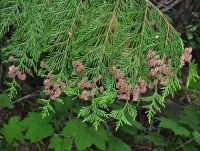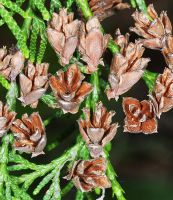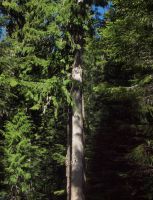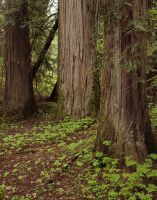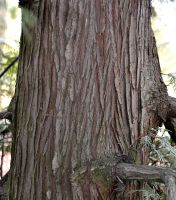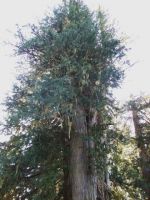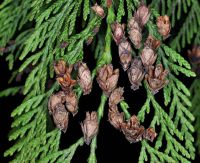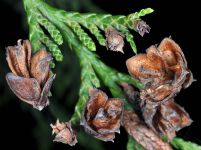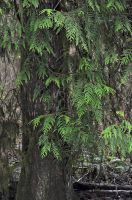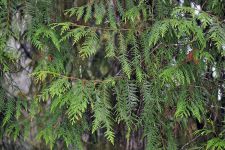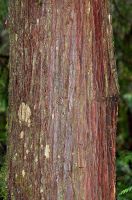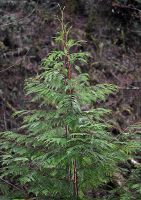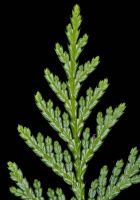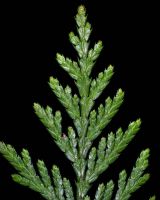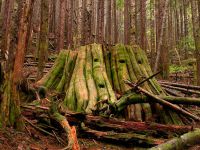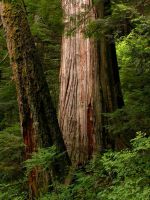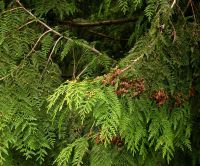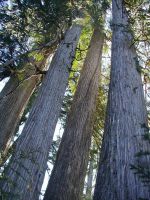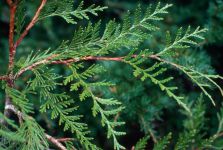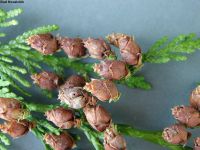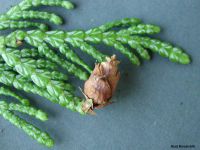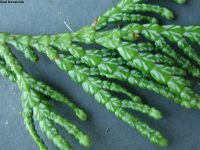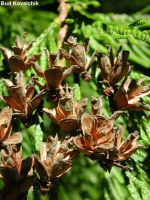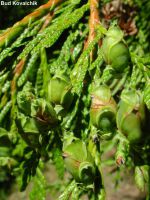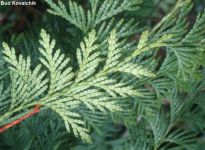Distribution: Occurring on both sides of the Cascades crest in Washington; Alaska to northern California, east to Alberta, Idaho, and Montana.
Habitat: Moist or swampy areas from sea level to mid-elevations in the mountains.
Cones: April-May
Origin: Native
Growth Duration: Perennial
Conservation Status: Not of concern
Pollination: Wind
Monoecious, large to huge trees up to 70 m. tall, in age strongly fluted and buttressed at the base.
Bark thin, reddish-brown, longitudinally ridged and fissured, peeling off into long, fibrous strips.
Leaders slender and drooping, the branches spreading, the ultimate branchlets flattened, at first lustrous, but browning in 3-4 years; leaves scale-like, opposite in 4 rows, the lateral leaves keeled.
Staminate cones numerous, sub-globose, 2 mm. long, tipping many short branchlets, the stamens in 4 pairs; ovulate cones solitary on the ends of short branches, ellipsoid, at first bluish, becoming brown and 8-10 mm. long at maturity.
Publication: Descr. Pinus. 2: [19]. 1824.
PNW Herbaria: Specimen records of Thuja plicata in the Consortium of Pacific Northwest Herbaria database.
WA Flora Checklist: Thuja plicata checklist entry.
OregonFlora: Thuja plicata information.
E-Flora BC: Thuja plicata atlas page.
CalPhotos: Thuja plicata photos.
USDA Plants: Thuja plicata information.


